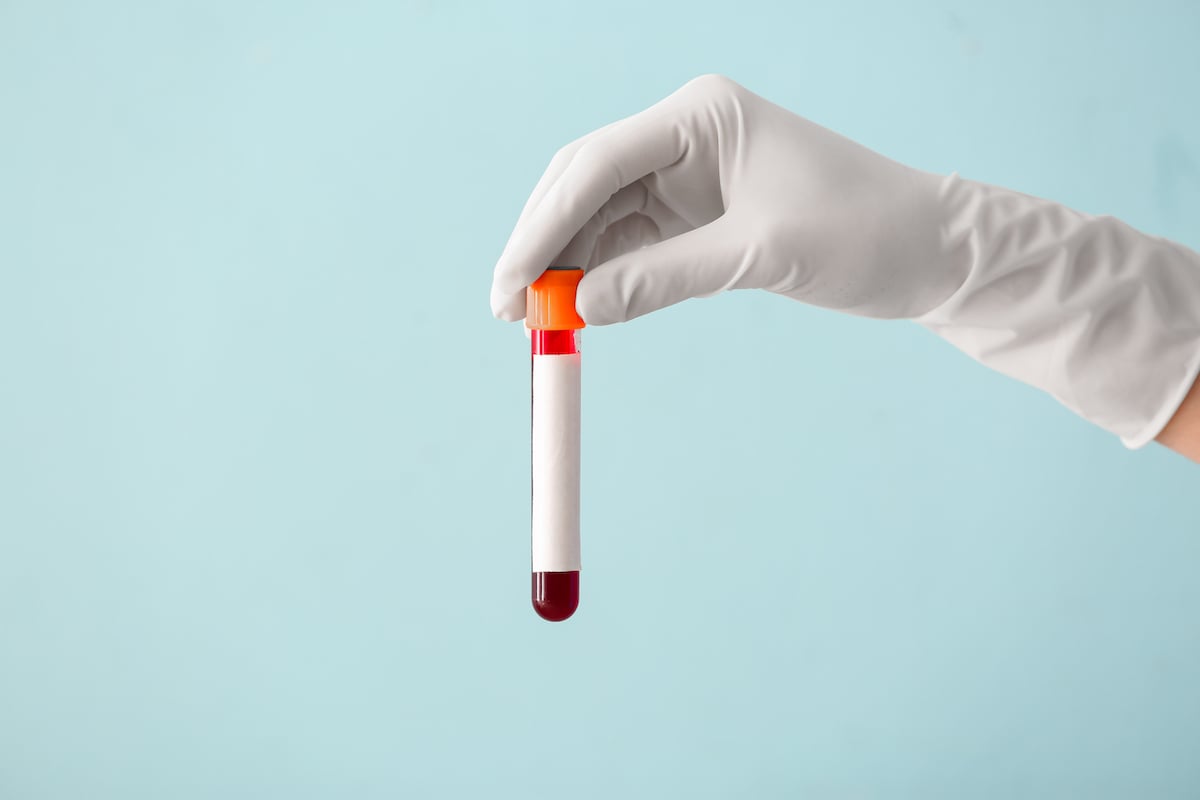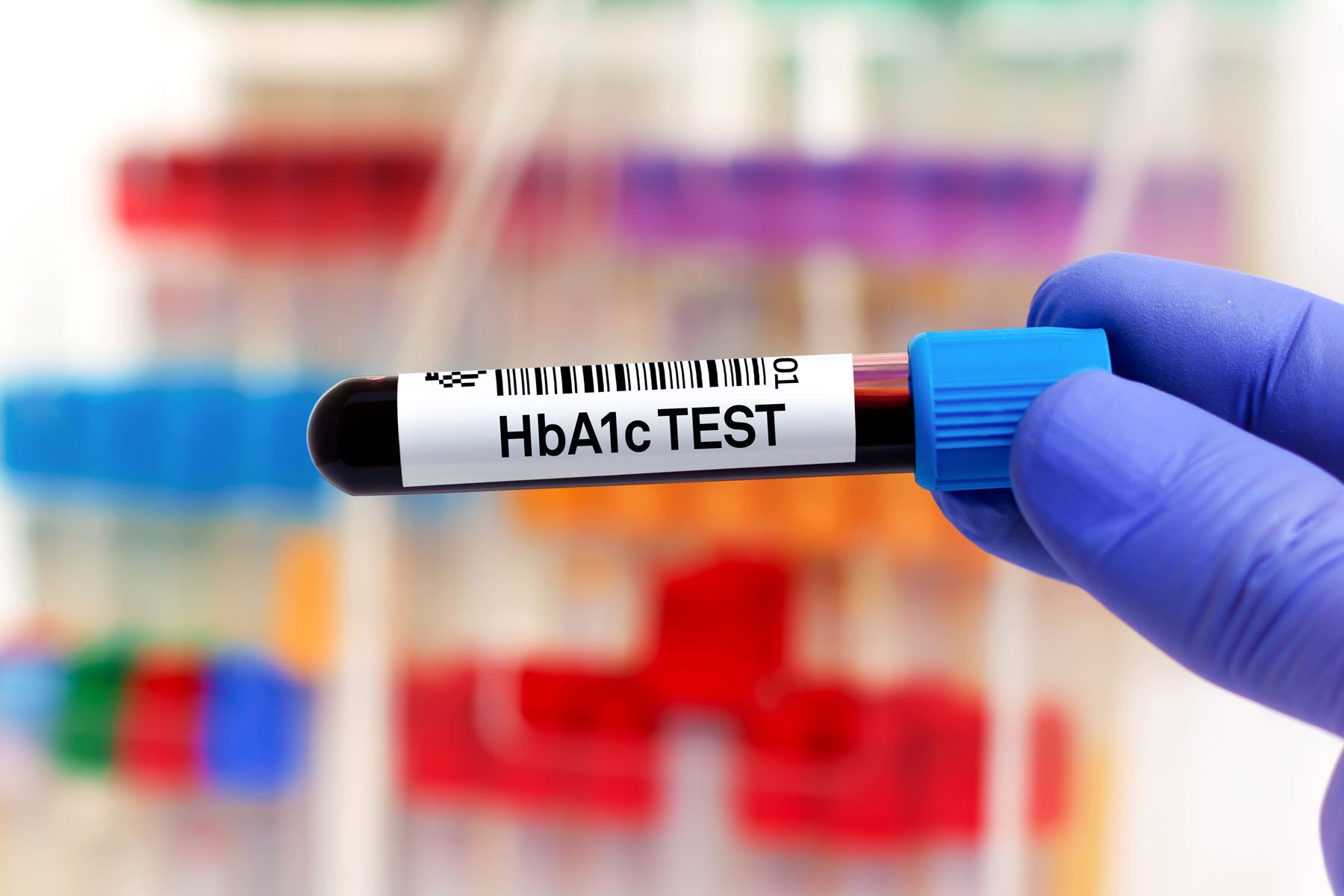If you get an annual physical, you may assume you have everything you need to monitor your health. But this once-a-year appointment may be falling short. “Primary care physicians have a set amount of time—usually only about a half hour or less—to cover an incredible amount of ground,” says Ami Kapadia, MD, a functional medicine physician in Portland, Oregon. That’s why it’s ideal to come prepared to get the most out of this annual exam.
While most practitioners will ensure you’re up to date on basic tests, such as cancer screenings and bloodwork, there may not be time to look at a holistic picture of your health, she says. “Our current healthcare system is set up to be more reactive than preventative,” Kapadia explains. “It’s set up more to diagnose problems rather than to provide education on prevention.”
For instance, with metabolic health, we typically don’t take action until a patient shows signs of metabolic dysfunction that are measurable on conventional lab tests, Kapadia says. “When it comes to Type 2 diabetes, patients often aren’t aware that their blood glucose numbers are less than optimal until they have prediabetes,” she explains. “But the dysfunction may have been there years earlier.”
Despite these shortcomings, your annual physical exam is still critical. It’s an insurance-covered opportunity to connect with your doctor and check in on your long-term health. Your physician will check your height and weight, as well as vital signs such as your heart rate and blood pressure. They will also do a head-to-toe exam, checking your mouth and ears, listening to your heart and lungs, and feeling your lymph nodes to look for swelling.
Although it’s not a deep dive into any one area, including metabolic health, and physicians will likely be pressed for time, you can often use the appointment to ask questions or even inquire about additional testing. Read on for advice on navigating the standard components of the annual physical to get the most out of the visit, as well as other steps you can take on your own.
Are You at Risk for Heart Disease?
The Standard Tests
The American Heart Association recommends that all adults aged 20 or older have their cholesterol checked at least every four to six years. Most doctors can order a lipid panel to check your cholesterol every year. It typically includes:
Total cholesterol. A total cholesterol level of less than 200 mg/dL is the standard for normal. Between 200 to 239 mg/dL is borderline high, and 240 mg/dL or more is high. Levels advisors recommend keeping it below 180 mg/dL.
LDL cholesterol. LDL has traditionally been referred to as “bad” cholesterol for its reported role in heart disease risk, though many consider that an oversimplification. Your goal LDL cholesterol is based on your overall risk factors for complications such as a heart attack, including Type 2 diabetes or existing heart disease. If you have no risk factors, standard guidance is that anything under 130 mg/dL is generally acceptable, though Levels advisors recommend keeping it under 100 mg/dL or even 70 mg/dL.
HDL cholesterol. Levels below 40 mg/dL raise the risk of heart disease. The ideal is 60 mg/dL or higher.
Triglycerides. High triglyceride levels–typically above 150 mg/dL–are associated with an increased risk of cardiovascular disease. Levels advisors recommend aiming for 100 mg/dL or less.
These four numbers together can provide a general sense of how your lipid levels may contribute to your heart disease risk, says Kapadia.
What Else to Ask About
For an even more comprehensive look at your risk of heart disease as it pertains to lipids, we can look at two other numbers: your total cholesterol-to-HDL ratio, and your triglyceride-to-HDL ratio, Kapadia suggests. Both are readily calculated from a basic lipid panel and help look at overall risk of heart disease, she says. Your total cholesterol-to-HDL ratio should be less than 3.5:1 and optimally as low as 2:1. An optimal triglyceride-to-HDL ratio is 2.5:1 or less. You can learn more with our guide to understanding your cholesterol panel, found here.
If any of your numbers are outside optimal levels, or you have other risk factors for heart disease, such as a family history of heart disease, being overweight or obese, smoking, or a condition like Type 2 diabetes, Kapadia advises that you may want to ask about the following two additional tests:
- ApoB testing measures the amount of a protein, ApoB, prominent in LDL cholesterol. While the optimal levels of ApoB are debated, levels over 110 mg/dL may indicate a higher risk of heart disease.
- LDL particle testing measures the number and size of the LDL particles in your blood. A higher amount of small, dense LDL particles may indicate a greater risk of heart disease, even if your total LDL cholesterol is within normal range, says Kapadia. Increased small, dense LDL particles may also be related to insulin resistance.
How Is Your Glucose Control?
The Standard Tests
Your blood glucose levels are an essential indicator of your overall metabolic health, as well as a potential warning sign for metabolic dysfunction. The American Diabetes Association recommends all adults over 35 be screened for Type 2 diabetes at least every three years and more often if they are overweight or have other risk factors, such as a close relative with the condition. Standard testing for diabetes includes fasting glucose and hemoglobin A1c, which provides a snapshot of your glucose control over a three-month period. Levels advisors recommend the following optimal levels:
- Fasting glucose: Less than 90 mg/dL
- Hemoglobin A1c (HbA1c): Less than 5.5%
What Else to Ask About
In addition to testing for a fasting glucose level and a hemoglobin A1c, some additional tests can be helpful.
“Your A1c and fasting glucose can [fall within the normal range], but you still can be on your way to insulin resistance, which is a precursor to Type 2 diabetes,” Kapadia explains.
That’s why she often recommends getting a fasting insulin test. While most practitioners don’t order it routinely, you can request that they add it. Insulin is a hormone that helps move your glucose from your bloodstream into your cells, and it’s vital to keep it at the proper levels to reduce your risk of developing Type 2 diabetes,” she says. An elevated fasting insulin with normal fasting glucose is concerning.
There isn’t a scientific consensus on optimal insulin levels, but Levels advisors suggest that fasting insulin stays below 10 microunits per milliliter.
Some Levels experts recommend having your medical provider calculate your homeostatic model assessment for insulin resistance (HOMA-IR), indicating how well your body’s insulin response handles glucose. To calculate your HOMA-IR, multiply your fasting glucose (in mg/dL) by your fasting insulin (in uU/mL), and divide it by 405. While the numbers vary by gender, age, and health status, an optimal HOMA-IR is generally under 1.
Do You Have Hidden Inflammation?
Inflammation can raise your risk of chronic health conditions such as heart disease or certain cancers. One way to help gauge undetected inflammation in your body is to do a simple blood test called a high-sensitivity C-reactive protein (hs-CRP) test. Hs-CRP can be used as one more measurable parameter in helping to determine your risk of heart disease.
The Standard Tests
Historically, we [doctors] would only order an hs-CRP test if we were monitoring long-term inflammatory conditions, such as rheumatoid arthritis or lupus, for example, or if we were looking for signs of infection, Kapadia says. Over the last two decades, some have also been using hs-CRP as part of the assessment for cardiovascular risk. This measure is most useful for those at intermediate risk of heart disease when we look for more data points to paint an overall picture of their risk. It’s important to note that both acute conditions (like an acute injury, a dental infection, the flu, etc.) and long-term inflammatory conditions can elevate hs-CRP. So, if this value is high in someone otherwise healthy, it’s important to determine if a more acute issue may be the cause and repeat the test periodically.
What Else to Ask About
Dr. Kapadia also recommends a blood test to measure homocysteine, an amino acid your body uses to make protein, to help diagnose inflammation. High levels of homocysteine are associated with an increased risk of heart disease and can often be treated with B vitamins, which help to break down homocysteine. A normal level is 5–15 mmol/L.
Is Your Microbiome Optimal?
The gut microbiome is the natural ecosystem of bacteria and other microorganisms that live in your GI tract. They help you digest food, support your immune system, defend against disease-causing bacteria, and may even be protective against conditions such as obesity, Type 2 diabetes, and autoimmune diseases like rheumatoid arthritis.
The Standard Tests
One test that can help determine the health of your microbiome is a fecal/stool analysis, which sequences the genes of the bacteria and other organisms in your stool. Your doctor can order this type of advanced stool test if you have chronic GI symptoms such as diarrhea or bloating or if they suspect you are having trouble absorbing nutrients. “I use stool testing to look for hidden causes of inflammation and imbalances of microbes such as protozoa or yeast,” says Kapadia. “The test also analyzes your digestive function—for instance, if you secrete enough digestive enzymes for your body to absorb nutrients.”
What Else to Ask About
In addition, Kapadia suggests breath testing to check for small intestinal bacterial overgrowth (SIBO). In this test, you breathe out after drinking a mixture of glucose or lactulose and water. If there’s a rapid rise in exhaled hydrogen or methane, you may have bacterial overgrowth in your small intestine, she says. Your doctor’s office can do the test, or you can purchase a kit and do it yourself at home.
Is Your Nutrient Intake and Absorption Optimal?
The Standard Tests
“Here are some of the tests Dr. Kapadia finds useful in monitoring nutrient status when getting annual bloodwork:
- Ferritin. This is a measure of iron storage in the body. The normal range for blood ferritin is 24 to 336 micrograms per liter for men and 11 to 307 micrograms per liter for women. It’s important to know that iron stores that are both too low and too high can be detrimental to our health. If levels are too high or too low, this requires further investigation to find the cause.
- Vitamin B12. Kapadia says many people, particularly older adults, as well as those on certain medications and those with chronic digestive issues, are deficient in this vitamin, which is needed to form red blood cells and the proper nervous system function. Many labs report a range of > 200 pg/mL as normal but give the caveat that some people will experience symptoms at levels less than 400 pg/mL. Kapadia finds it helpful to supplement with B12 when patients test below 400 pg/mL. If your doctor suspects a deficiency, they may also check the levels of a substance in the blood called methylmalonic acid.
- Zinc and copper. Zinc helps your body create protein and keeps your immune system running, while copper helps make energy, connective tissue, and blood vessels. Women should have levels of zinc over 70 mcg/dL and copper levels higher than 80 mcg/dL. For men, zinc should be more than 74 mcg/dL, and copper should be higher than 70 mcg/dL.
- Vitamin D. At least a quarter of all Americans don’t get enough of this vitamin, which helps your body retain calcium and phosphorus to build bone. The correct dosage depends on your blood levels—people under 70 should aim for 600 IU per day, according to the National Institutes of Health, though Levels advisor Dr. Mark Hyman recommends up to 2000 IU daily. (If you supplement and take more than 2000 IU a day, monitor your blood levels to ensure you’re not taking too much).
What Else to Ask About
Some practitioners use the NutrEval FMVtest by Genova Diagnostics, which tests a variety of blood and urine biomarkers and assesses the body’s needs for antioxidants, vitamins, minerals, essential fatty acids, and more. A functional medicine physician can order appropriate nutrient lab testing to see where you may be lacking, says Kapadia.
Are Your Hormones in Balance?
Doctors take different approaches to hormone testing. Levels health advisor Sara Gottfried, MD, for example, thinks it’s important to keep an eye on hormones, including reproductive hormones, even if you’re not actively trying to get pregnant. “If you’re 32 and trying to get pregnant, they’ll check your thyroid, cortisol, testosterone, estradiol, progesterone,” she says. “There is a double standard to be told that it fluctuates too much, and it’s not meaningful when you’re not trying to get pregnant, and yet it is meaningful if you are trying to get pregnant.”
Other doctors, like Kapadia, take a different approach. While she orders thyroid hormone testing on most patients, she takes a more targeted approach to further hormone testing. “For instance, if someone is premenopausal and has a lot of menstrual-related symptoms, such as irregular or heavy periods, or if they are perimenopausal and experiencing hot flashes, I’ll order hormone testing routinely,” she explains. For women, hormone evaluations include checking:
- Estradiol
- Progesterone
- Total and free testosterone
- FSH and LH
- DHEA-S
- TSH (thyroid stimulating hormone)
For male patients, Kapadia orders testosterone testing if they have symptoms such as low libido, low energy, erectile dysfunction, or trouble building muscle.
While testing for cortisol, a stress hormone, can sometimes be helpful, Kapadia doesn’t routinely measure it. “I can usually tell what’s going on with a patient’s cortisol levels based on a thorough clinical history,” she adds.
What if your doctor won’t order some of these tests?
Some commercial labs allow you to order your own tests directly, no doctor’s visit required. Firms like Everly Well offer home testing for everything from hormone levels to food allergies. (Levels also offers a metabolic blood panel to its members.) Remember that if you self-order tests, insurance is unlikely to cover them, and you may be left with results you don’t understand. Kapadia adds, “I encourage people to go through their doctor for as many tests as possible to get insurance coverage and a proper interpretation of their results,” says Kapadia. “Metabolic health markers, such as glucose and insulin, for example, are usually covered and are inexpensive even when they’re not. And most functional medicine doctors have a cash rate for patients who don’t have good insurance coverage.” Fasting insulin can cost as little as $20, tests like ApoB can be around $60-70, while stool testing and advanced nutrient panels can cost significantly more.








